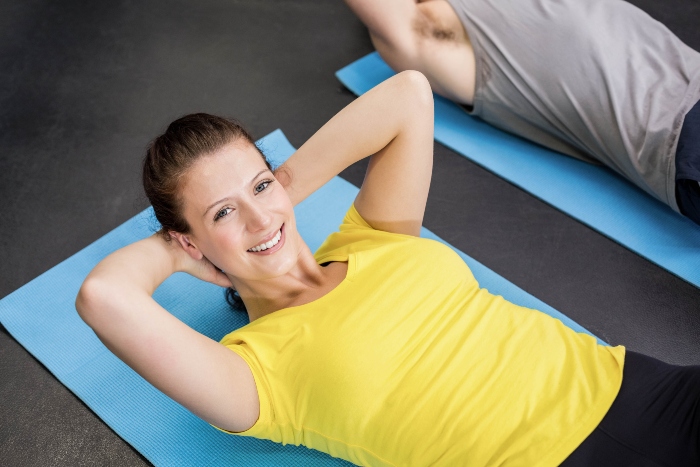What are the benefits of doing pelvic tilts? Pelvic tilts are exercises that involve tilting your pelvis forward and backward while lying on your back. They can be done for various reasons, including improving core stability, strengthening the abdominal muscles, relieving lower back pain, and promoting proper pelvic alignment. Here are some of the benefits associated with doing pelvic tilts:

Core Strength
Doing them targets the deep abdominal muscles, including the transverse abdominis and the pelvic floor muscles. Pace tilts can enhance core strength and stability by engaging and strengthening these muscles.
Spinal Stability
They help in promoting spinal stability by mobilizing and strengthening the muscles around the spine. This can alleviate lower back pain and improve posture.
Improved Posture
It can help correct postural imbalances by promoting proper alignment of the pelvis. They can counteract the tendency to excessively arch the lower back, which is a common issue in individuals with poor posture.
Lower Back Pain Relief:
Again, pelvic tilts can alleviate lower back pain by stretching and releasing tension in the lower back muscles. They promote mobility in the lumbar spine and can help reduce discomfort caused by tightness or muscular imbalances.
Flexibility and Range of Motion
Doing them can increase flexibility and range of motion in the lower back and hip area. By moving the pelvis through a full range of motion, you can enhance the flexibility of the muscles and ligaments surrounding the pelvis.
Pelvic Floor Health
The pelvic tilts can help strengthen the pelvic floor muscles, which play a crucial role in supporting the bladder, uterus, and rectum. Strengthening these muscles can help prevent or manage conditions like urinary incontinence.
Pelvic Floor Support
The pelvic floor muscles play a crucial role in maintaining continence, supporting the organs in the pelvis, and providing stability during physical activity. Pelvic tilts engage the pelvic floor muscles and can contribute to their strength and function.

Pre- and Postnatal Benefits
They are often recommended during pregnancy to strengthen the pelvic floor muscles, support the growing belly, and relieve back pain. After childbirth, they can aid in postpartum recovery and promote the restoration of pelvic floor strength.
Increased Body Awareness
Performing pelvic tilts requires conscious engagement of the core muscles and an awareness of pelvic alignment. This increased body awareness can carry over into other activities, helping you maintain better posture and movement patterns throughout the day.
Relaxation and Stress Relief
It’s true they can be performed as a gentle exercise or as a part of relaxation techniques, such as yoga or Pilates. The controlled movement and focus on breath can promote relaxation, reduce stress, and enhance mind-body connection.
Facilitating Circulation and Digestion
The rhythmic movement of pelvic tilts can stimulate blood flow to the pelvic region, potentially improving circulation. Additionally, by gently massaging the abdominal organs, pelvic tilts may aid in digestion and relieve constipation.
Rehabilitation and Recovery
They are often recommended as part of physical therapy programs for individuals recovering from injuries or surgeries in the pelvic region, lower back, or abdominal area. These exercises can help improve muscle strength, flexibility, and coordination in the affected areas, aiding in the rehabilitation process.
Stretching and Releasing Tight Muscles
Next, they involve alternating between tilting the pelvis forward and backward, which stretches and releases tight muscles in the lower back, hips, and buttocks. This can help alleviate muscle imbalances, tightness, and stiffness in these areas.
Enhancing Flexibility
Lastly, they involve a gentle range of motion that stretches and lengthens the muscles and ligaments surrounding the pelvis. This can increase flexibility and range of motion in the hips and lower back, improving overall mobility.
It’s important to note that while pelvic tilts can offer benefits, they may not be suitable for everyone, especially individuals with certain medical conditions or injuries. It’s always advisable to consult with a healthcare professional or a qualified exercise specialist before starting any new exercise routine to ensure it is appropriate for your specific needs and situation.

